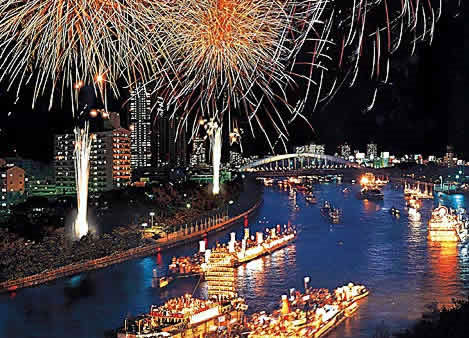Background
Tokuriki Tomikichirô (1902-2000 徳力富吉郞) was born in Kyoto. He graduated from the Kyoto City School of Fine Arts and Crafts and the Kyoto City Specialist School of Painting in 1924. He also studied nihonga (Japanese-style painting: 日本画) at the private school of Tsuchida Bakusen (1887-1936) and with Yamamoto Shunkyo (1871-1933). From 1929 Tokuriki focused on mokuhanga (block prints: 木版画), and he also actively promoted sôsaku hanga ("creative prints": 創作版画) in Kyoto. He published many sets and series before World War II, and afterwards established the Matsukyû Publishing Company to produce and distribute his prints and through its subdivision, Kôrokusha, to publish self-carved and self-printed hanga as well as works by other artists such as Kotozuka Eiichi (1906-1979), Takahashi Tasaburô (1904-1977), and Kamei Tôbei (1901-1977). For much of his long life Tokuriki taught many artisans and artists, some of them non-Japanese, and he traveled extensively, thus his influence was significant in the world of hanga. He is perhaps best known to Westerners through his many print designs in the shin hanga ("new prints": 新版画) manner for various series published by the three main Kyoto firms — Uchida, Unsôdô, and Kyoto Hanga-in. His self-carved, self-printed sôsaku hanga, such as the example we are offering here, are highly valued by collectors and curators. The artist recognized this dichotomy, saying, "I'd rather do nothing but creative prints, but after all, I sell maybe ten of them against two hundred for a publisher-artisan print."
For more about this artist, see Tokuriki Tomikichirô Biography.
Design
 Osaka's Tenjin Matsuri (Heavenly Deity Festival: 天神祭り) is ranked as one of the three great festivals of Japan (along with Kyoto's Gion (祇園) Festival and Edo/Tokyo's Kanda [Sannô: 山王] Festival. In Osaka, the Tenjin Matsuri can be traced back to the tenth century. During the Tokugawa period, the festival was celebrated on the 25th day of the sixth month (today it takes place on July 24-25). The festivities take place at Osaka's Tenmangû Shrine, built during the Tenryaku Era (947-957) by imperial order of the Emperor Murakami (926-967) in an attempt to appease the angry spirit of the scholar, poet, calligrapher, and politician Sugawara no Michizane (菅原道真; also Kan Shôjô, 菅丞相: 845-903). Michizane had been demoted from his ministerial position by the rival Fujiwara clan and died in exile in Kyûshû, whereupon plague and drought soon spread across the land. Michizane was posthumously restored to his title and then deified in 986.
Osaka's Tenjin Matsuri (Heavenly Deity Festival: 天神祭り) is ranked as one of the three great festivals of Japan (along with Kyoto's Gion (祇園) Festival and Edo/Tokyo's Kanda [Sannô: 山王] Festival. In Osaka, the Tenjin Matsuri can be traced back to the tenth century. During the Tokugawa period, the festival was celebrated on the 25th day of the sixth month (today it takes place on July 24-25). The festivities take place at Osaka's Tenmangû Shrine, built during the Tenryaku Era (947-957) by imperial order of the Emperor Murakami (926-967) in an attempt to appease the angry spirit of the scholar, poet, calligrapher, and politician Sugawara no Michizane (菅原道真; also Kan Shôjô, 菅丞相: 845-903). Michizane had been demoted from his ministerial position by the rival Fujiwara clan and died in exile in Kyûshû, whereupon plague and drought soon spread across the land. Michizane was posthumously restored to his title and then deified in 986.
In entertaining fashion, Tokuriki has captured the lively action during the evening fireworks (see the photo on the right for a contemporary photo of a similar moment during the festival). Tokuriki portrayed red-robed women performing a choreographed dance on a long boat while holding yellow parasols aloft. One vessel at the lower left displays more than 100 yellow and orange lanterns suspended from its mast (a similar festooning of a boat is just visible at the lower edge in the photo on the right). The flames from torches are reflected on the surface of the river, as fireworks burst and fall from the night sky. The high-arching Sakuramiya Bridge can be seen in the distance, as well as Osaka Castle. It is said that the modern-day festival celebration includes between 4,000 to 5,000 fireworks set off from two points — Kawasaki Park and Sakuranomiya Park.
For a late-Edo-period example of a print celebrating the festival, see Kunikazu KKZ07.
Prints by Tokuriki are in the Aichi Prefectural Museum of Art, Nagoya; Art Gallery of Greater Victoria; Brooklyn Museum, NY; Carnegie Museum of Art;Fine Arts Museums of San Francisco; Five College Museums/Historic Deerfield Collections; Harvard Art Museum; Los Angeles County Museum of Art; Museum of Fine Arts, Boston; National Museum of Modern Art, Tokyo; Smart Museum of Art, University of Chicago; University of Alberta Art Collection; Weatherspoon Art Museum, Greensboro; and Yale University Art Gallery.
Note: First-edition prints from this series have a second red "first edition" (shôhan, 初版) seal. Our impression still appears to be vintage, possibly just after the Pacific War.
BIBLIOGRAPHY
- Fujikake, Shizuya: Japanese Woodblock Prints. Tokyo: Tourist Library 10, Japan Travel Bureau, enlarged and rev. ed., 1949.
- Merritt, Helen: Modern Japanese Woodblock Prints: The Early Years. Honolulu: University of Hawaii Press, 1990, pp. 88-92.
- Smith, Lawrence: Modern Japanese Prints 1912-1989: Woodblocks and Stencils. London: British Museum Press, 1994, p. 36 and no. 50.
- Statler, Oliver: Modern Japanese Prints: An Art Reborn. Rutland: Tuttle, 1956, pp. 118-122, 126, 199; nos. 72-73.
- Tokuriki, Tomikichirô: Woodblock Printing. (trans. Arimatsu Teruko) Osaka: Hoikusha Publishing Company, 1968
- Zehnder, Amanda (intro.): Modern Japanese Prints: The Twentieth Century. Pittsburgh, PA: Carnegie Museum of Art, 2009, pp. 174-177.